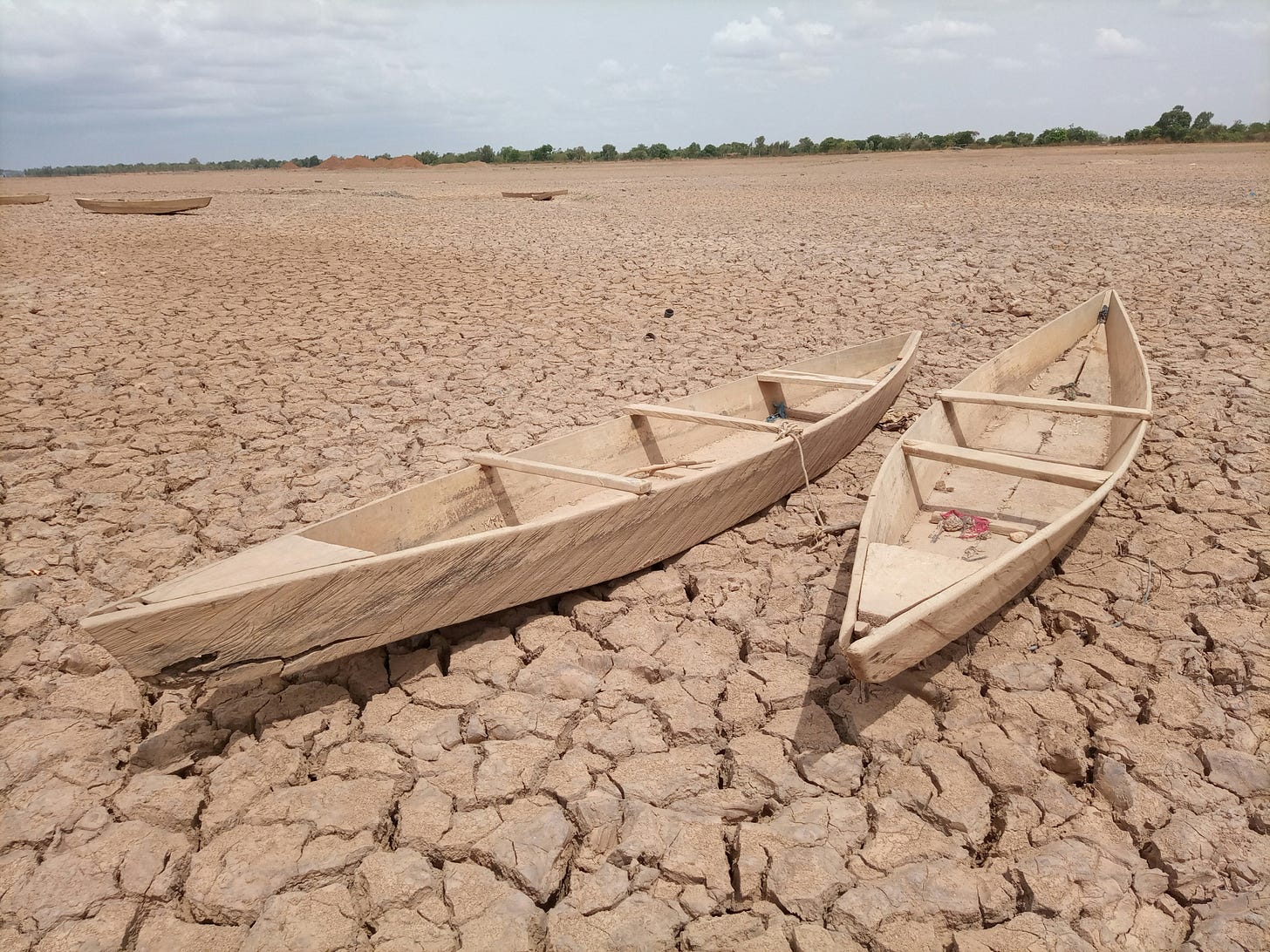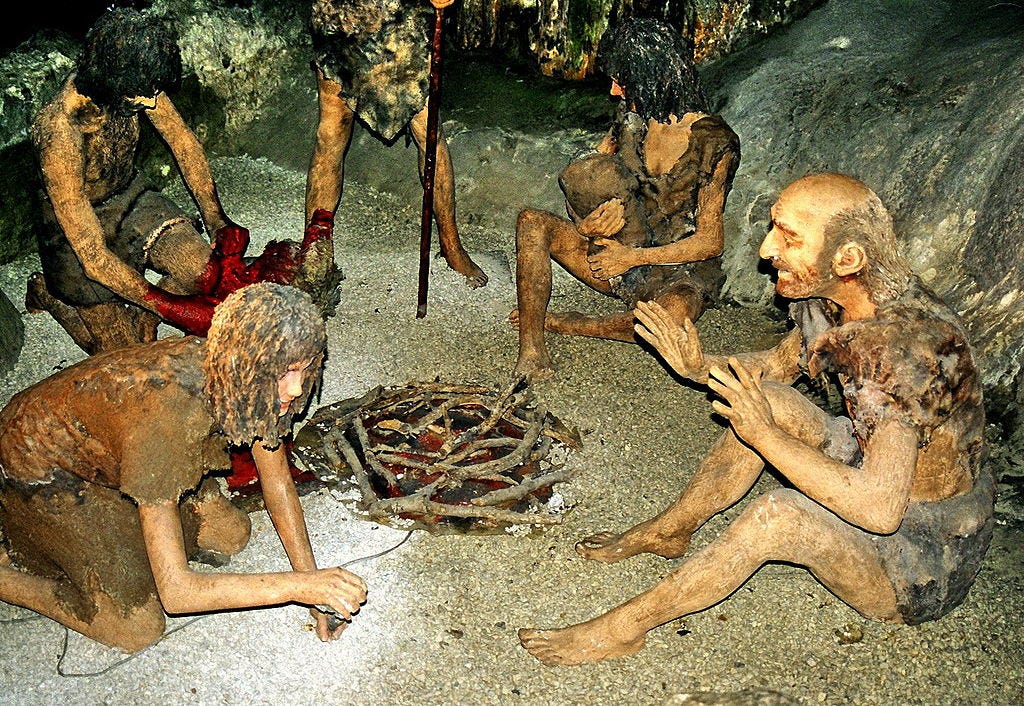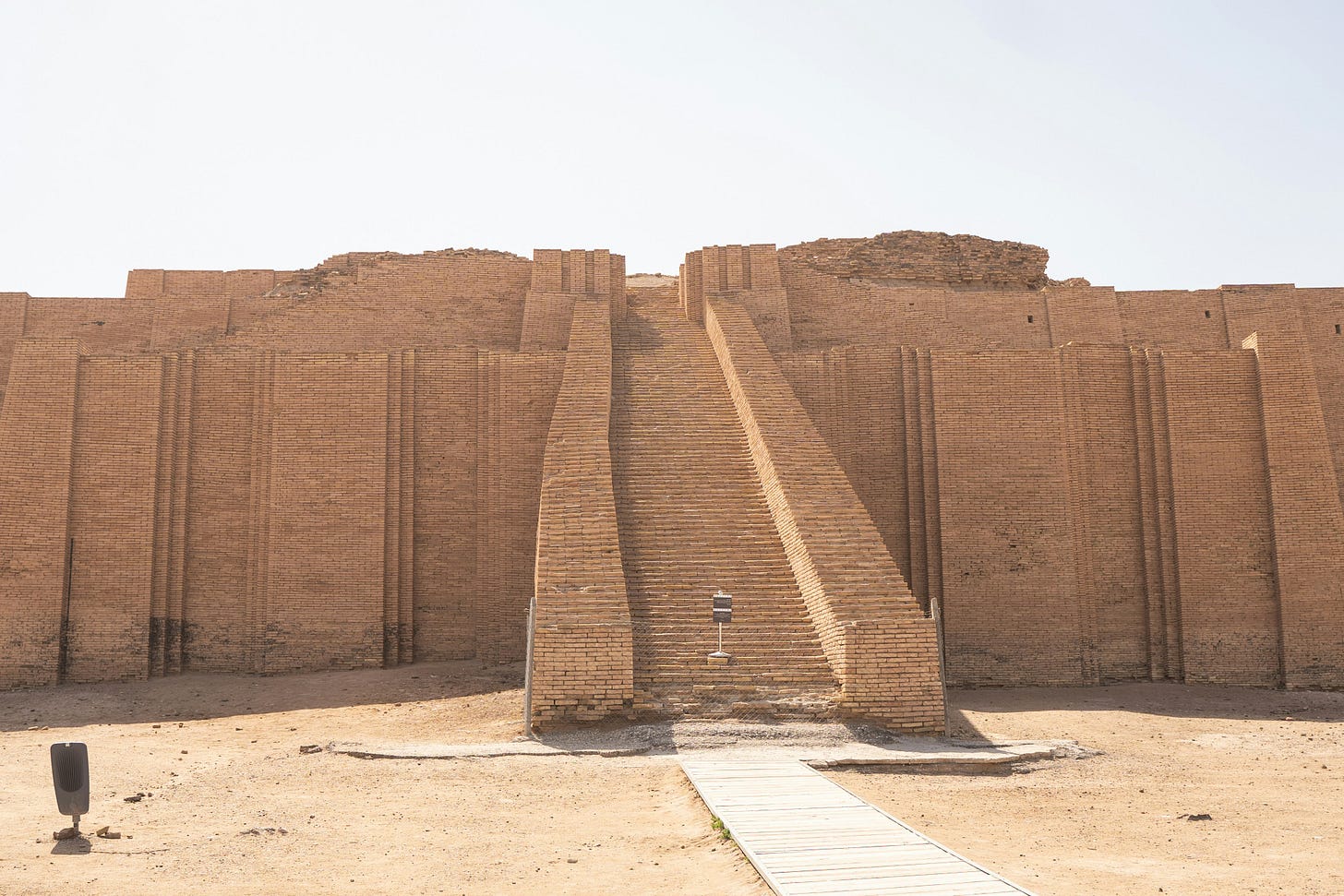Change Everything No 41: Beware the water serpent's revenge
Anthropogenic changes to the water cycle have made the planet wobble
Book news
Looking forward to being in Clemo Books in Newquay on Friday, with Change Everything!
Beware the water serpent’s revenge
That human activities have fundamentally changed the basic patterns of this planet is now unmissable, but new - significant - impacts keep emerging. So much so that it is hard even for major discoveries to make much of a splash.
Such is the case with the “permanent hydrological regime change” identified by researchers writing in the journal Science. In a particular rush at the start of the 21st century, but continuing since, soil moisture levels and total terrestrial water storage (including aquifers, lakes, rivers etc) are going down, and down and down - more than 2,000 gigatonnes in the past two decades. That’s a result of the changing climate: a decline in rainfall overall, heavier rainfall landing on parched earth that runs off rather than soaking in, but plants still keep growing, and transpiring out moisture as they must. Climate and ecological drought is the new normal. While this of course contributes to sea level rise: the water has to go somewhere.
Photo by YODA Adaman on Unsplash
How to put this in scale? Well…
“The study also confirms an explanation for a slight wobble in the rotation of the Earth—it's being driven by the changing moisture levels of the planet. …Imagine the planet's wobble like an electrocardiogram for the Earth, he said. Seeing this result is like detecting an arrhythmia.”
Those remaining rivers, lakes, aquifers etc are of course all too often treated as little more than a dumping ground and a resource to be depleted to destruction, in the US notably by fracking, the UK by privatised water companies dumping sewage, in much of the Global South by the destructive actions of mining companies.
Yet the human species has not for most of its history been so ignorant or careless of fresh water sources. Respecting the importance and power of water is, as Veronica Strang charts colourfully in Water Beings: From Nature Worship to the Environmental Crisis, foundational in many cultures, expressed often in animal form. She traces the existence of water serpent beings through most of human history, found in most cultures, if demonised in the past two millennia by dominant religions. And ties that to the increasingly powerful drive to recognise the rights of nature, particularly the rights of rivers, marking a potential place for these beings in a reconstructed relationship of respect between the human and more-than-human worlds.
Strang sees water as agent, not just subject:
The human mind reaches out and makes imaginative use of the material world. Recurrent symbolic themes and ideas arise from shared cognitive and sensory processes of engagement, and the reality that elements of the physical world also share common material properties and behaviours. Water, in every context, retains its unique characteristics. This suggests that water serpent beings are generated not only by human phenomenological experience but by water itself….To borrow the essence of Claude Lévi-Strauss’s phrase, water is ‘good to think’. Its fluid properties enable people to imagine concepts of flow, movement, time, change and transformation, all of which are vital in composing cosmological understandings of dynamic social and material processes, and the capacities of water to generate life. (p. 18)
Strang finds that traditional understandings have not been so comprehensively destroyed as church and state might have hoped.
In Armenia people mark the annual festival of Vardavar by splashing each other with water. This was originally an ancient pagan festival worshipping Astghik, the creator of Heaven and Earth and goddess of water and fertility, whose prehistoric presence is marked by numerous vishaps (serpent or dragon stones) across the country. Similar water festivals, echoing pagan solstice rituals and celebrating Slavic fertility deities, can be found across Poland, Ukraine, Czechia and Slovakia. (p.231)
And indigenous peoples are reasserting their understandings, and practical sense, in the face of the destructiveness of twentieth century developmentalism. I’ve touched on the Australian Aboriginal rainbow serpent before; Strang explores another people’s version:
The Martuwarra Fitzroy River Council describes Yoongoorrookoo, an ancestral serpent being, as a living ancestor, positioning it as an actor and co-author in a public dialogue. Joe Nangan, an indigenous elder, described how the Rainbow Serpent upholds the Law and embodies the personhood of the river: In the Bookarrarra stories of Nyikina people, Yoongoorrookoo, the powerful and sacred Rainbow Snake, the giver of rain and life . . . can be very kind, bringing gentle rains and filling the water holes for the Nyikina and his chosen people. But when he is angry, he is capable of causing whirlwinds, floods, or even cyclones. Aboriginal people are always very careful near waterholes for fear that they should offend Yoongoorrookoo, the sacred and powerful rainbow snake. (p. 235)
Beware the rainbow snake Source
I found the book through the New Book Network interview with Strang.
Picks of the week
Reading:
James Lovelock is one of those names that looms large over the environmental movement. But reading Jonathan Watt’s The Many Lives of James Lovelock: Science, Secrets and Gaia Theory, reveals what a problematic character he was, even though Watts clearly has a serious soft spot for his subject.
Lovelock was a man who was at very best naïve, at worse deeply cynical, in maintaining support for and links with the fossil fuel industry. “Lovelock claimed he met his ethical obligations by warning Rothschild: “I alerted him to Rachel Carson’s Silent Spring. He read the book and then on the next visit he said: ‘I’m afraid she is right. We’ll have to close the dieldrin plant in the Netherlands.’ This was not what happened. In fact the opposite was true. Shell maintained production and launched a publicity campaign to questions Carson’s scientific credentials and to reassure the public that the risks of these insecticides were overblown… nonetheless, the public lesson Lovelock took from this – and repeated in speeches in decades afterwards – was that big corporations were not the evil, planet-trashing villains they were often painted to be by the green movement. He was convinced corporations were more far-sighted and responsive than governments because they had the resources and expertise to fully assess and respond to problems.” (p. 122)
Equally problematical: “’One thing I discussed that could have been disastrous for Shell was tetraethyl lead. It is an extremely poisonous compound that destroys the brain…We found the average car used to have tetraethyl lead in huge amounts from leaking carburettors. Whenever you could smell petrol, you were inhaling it. This was the only thing I did at Thornton that was not published,’ Lovelock acknowledged towards the end of his life.” (p. 123)
Thinking
Twentieth century thinking about the place of competition at the centre of human life has coloured thinking about the relationship between us and Neanderthals. Did we wipe them out? Did we out-compete them? Well the genetics has clearly demonstrated that they are actually us, 1-4 per cent of modern humans originating from outside Africa. And new research demonstrates that it is not just their genes we inherited, but elements of their culture, for 110,000 years ago in the Levant, the two species “not only lived side by side but also interacted closely. They shared tools, daily practices, and burial customs—evidence of meaningful cultural exchange.” As so often, creativity arises from diversity and mixing of ideas and approaches.
Neanderthals - innovators and cooperators
Yuliya S., CC BY 3.0 <https://creativecommons.org/licenses/by/3.0>, via Wikimedia Commons
Listening
Along much the same lines, another fascinating New Books Network interview with Assyriologist Dr. Selena Wisnom, which highlights how where the Mesopotamians developed, classical Greek civilisation copied and developed. It was the mixing - which happened a great deal also within Mesopotamia - that was fertile and productive. Another knock on the idea of “Western Civilisation”.
Researching
As soon as artificial fertilisers arrived, farmers observed the damage they did: an old Italian proverb ran that fertiliser was good for the father and bad for the son. Some of the reasons, the best part of a century later, are finally starting to be understood, such as the reasons why excess nitrogen makes crops more vulnerable to dieases. "The immune system of plants and humans is much more alike than one might initially think. In plants, hormone-like peptides are involved in the immune response, and there, too, is a complex interplay between nutrition and health.” But the final sentence of an article covering the discovery made me want to thump my head on the table: “"With our newly gained knowledge, it might be possible in the future to breed crops that are particularly resistant to disease, even with a moderate application of nitrogen." Err…. perhaps just stop applying the nitrogen and take an agroecological approach of ensure that the plants can extract the nutrient from healthy soil?!!!! 🤦
Almost the end
About the English education system: “"When things are going wrong for a child at school, we tend to locate the problem in young people and their parents. We don't think enough about what is happening in our schools….We need to see our children's reactions—both emotional and behavioral—as important feedback on the system and as an impetus for change." Yes, yes, and yes. Exam factory schools with military-style discipline are bad for many children, and absolutely unbearable for some.
What did you think?
You can also find me on Instagram, Facebook, LinkedIn, TikTok and X.







